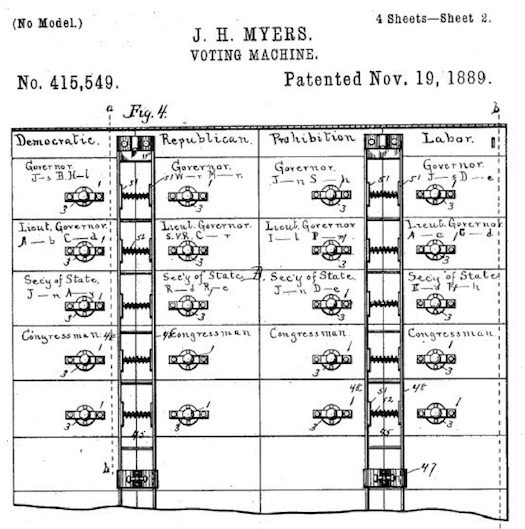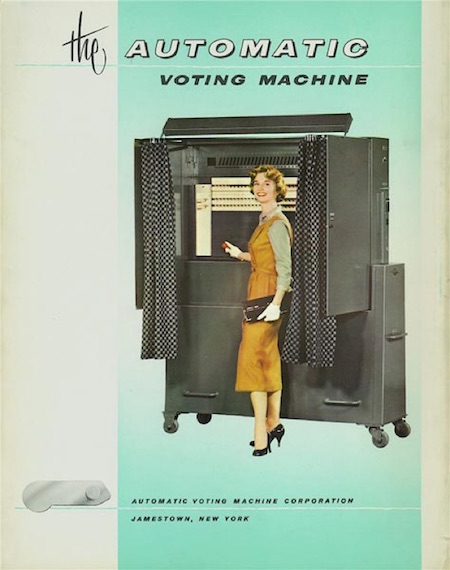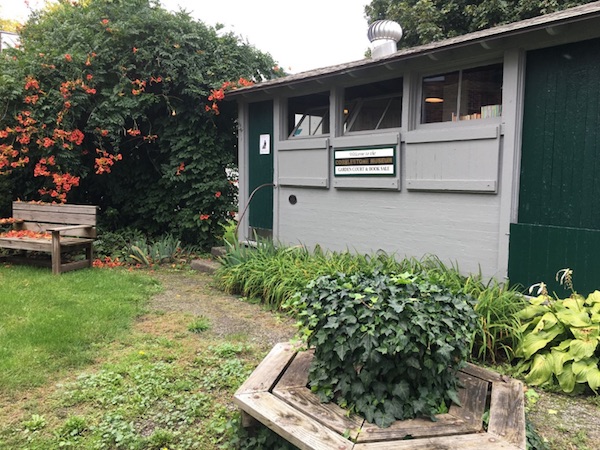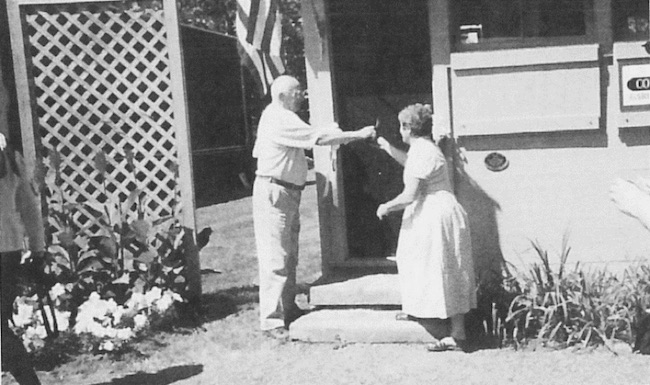Historic Childs: The Voting House
By Doug Farley, Cobblestone Museum Director – Vol. 2 No. 39
GAINES – One of the very unique buildings located in the Hamlet of Childs is a historic “Voting House,” given to the Cobblestone Museum in 1999.
This interesting structure was donated to the Museum by the Town of Hamlin in Monroe County. Mary Smith, Town of Hamlin Historian, explained that the old voting house dated back to 1909. The exact date that the building was taken out of service for voting is not certain, but can be estimated to be sometime around 1970. But, what is known, is that the building had reached a high level of deterioration over the years. The photo above shows the building at the time of its arrival at the Museum in the fall of 1999.
I was recently asked by an observer, what exactly is a Voting House? The concept of having a unique and separate building that is only used for voting once or twice a year seems pretty foreign today. I admit that in my lifetime, I have seen the evolution from “voting booths,” which were actual booths, usually closed off with curtains, to the present day system of electronic voting machines that are delivered to select locations when needed for voting, but I never voted in a Voting House.
The history of voting in Orleans County pretty much follows the trend of all voting in this country, from paper ballots or “tickets” to mechanical voting devices. The invention of the later is credited to Jacob Meyers, who operated a company that made safes in Rochester, NY. His introduction of the Meyers Automatic Voting Booth set the course for a trail of successors that even today, follow his model.
Meyer’s voting machine used many of the same security measures he built into his safes, and in many ways, the first voting machines resembled a large vault, about ten feet square containing two doors at the front and no windows. The voters would enter through the door on the right. The poll watcher would then close and lock the door while with the aid of kerosene lamps for lighting, the voter pressed in a series of knobs next to the names of their candidates.
When finished, the voter would exit through another door and slam the door shut. This process would lock the exit door, record the vote and release the lock on the entrance door, allowing the next voter to enter. Meyers declared that his new voting machine would “protect mechanically the vote from rascals and make the process of casting the ballot perfectly plain, simple and secret.”
The first application of the Meyers machine in the United States came on April 15, 1892 in the Town of Lockport when at 8:45 a.m., incumbent supervisor, John G. Freeman, entered the machine and cast the first mechanical vote for his own re-election. The “Lockport Union” reported that six persons voted in the first minute – a truly remarkable feat.
For the benefit of those who could not read, the slate of candidates for each party were printed in different colors – yellow for Democrats, red for Republicans and blue for the Prohibition Party. The newspaper went on to report that the voting was “unquestionable, untrammeled, incorruptible and correctly counted.” (It would be safe to presume there were no “hanging-chads.”) Within a minute after the polls closed at 5:30 p.m., the re-election of Supervisor Freeman was announced and within minutes, the name of every other successful candidate was also known. It was a remarkable feat in a day and age when voting results usually required many hours or days of counting paper ballots by hand.
Even the old voting “booths” that I remember used to take up a lot of real estate in a polling place and were generally stored at the voting site which also created storage issues. However, I really have never seen or frequented a voting house in my lifetime, so I thought the question pertaining to voting houses to be pretty valid.
We know for a fact, that the voters in the Town of Gaines would have exercised their Constitutional authority to participate in free, local elections by entering their vote within the town’s polling place. This was first accomplished through paper ballots placed in a ballot box, and eventually progressed to mechanical registry by pulling a lever on a voting machine.
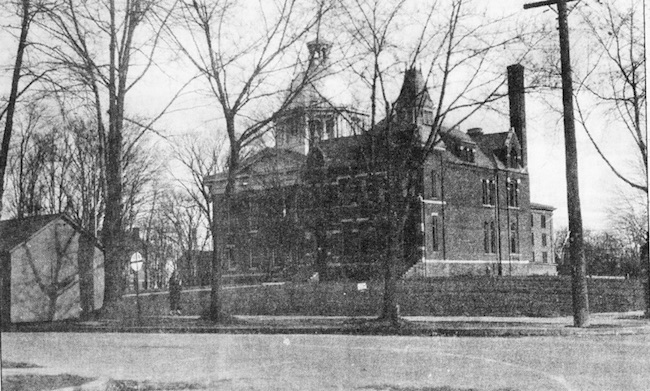
Voting House (lower left above) on Courthouse Square, Albion. As seen from Christ Episcopal Church, c. 1930.
Former Orleans County Historian Bill Lattin remembers seeing voting houses used in various locations in Orleans County, although they were gone when he was old enough to vote. In the early 1900s, Voting Houses for each voting district were placed on a flat-bed wagon and pulled by horses to sit within the voting district. They placed them between the sidewalk and the street, but they usually extended out into the road.
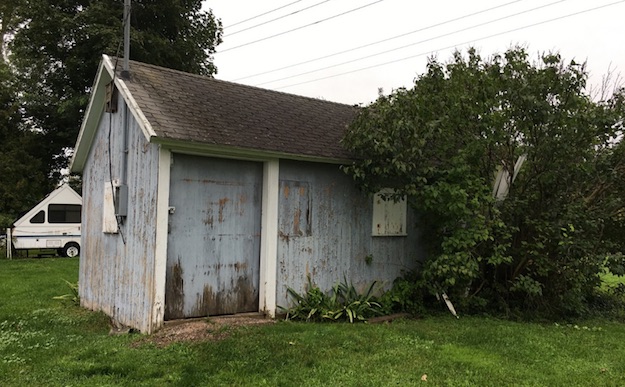
An old Voting House now used for storage on West Academy Street, Albion.
Bill recalls seeing a photo of a Voting House at the Court House Square in Albion and an old Voting House on West Academy Street. After Election Day, the Voting House was again carted off to be stored on county property. Primary voting at that time took place in September, so the Voting Houses were left in place from Primary Day in September to Election Day in November.
Larger municipalities used Voting Houses, but small towns used public buildings for voting, similar to today. Cary Lattin, Bill’s father, served as a Voting Inspector in the Town of Gaines and fulfilled his duties at the Voting District #1 in the old Town Hall. He served as a Republican Inspector along with Nellie Vagg. The two Democrat Inspectors were Mae Wolfe and Mrs. House. Gaines also had other Voting Districts, some casting ballots in the Schoolhouse at Eagle Harbor and others at the East Gaines Church. The number of voting districts was controlled by state law based on population density.
Bill noted that the Voting Houses were “always painted battleship grey.” They had two doors, with the door on the left used as an entrance and the door on the right side of the house used for an exit only. Bill said, “The exit door didn’t even have an outside doorknob to prevent people from entering the wrong door and disrupting the voting process.” The buildings were heated with a kerosene stove and lit with kerosene lamps. Inside the building, a railing was placed to separate someone who was voting from people waiting to vote. There were lots of windows to provide illumination.
At some point in history, towns, cities and villages stopped using voting houses and instead enlisted the help of churches and other community buildings to serve as temporary polling locations. The rest of the year, the sites continued in their normal course of business.
The Voting House that was given a new home at the Cobblestone Museum was one that had originally been commissioned by the Monroe County Board of Elections in 1909. It was used in the city of Rochester until it was taken out of service. Town of Hamlin Historian Mary Smith acquired it for part of a Town of Hamlin Museum, made up of several small buildings, located just north of Walker, NY. When it was decided to no longer have a Town Museum, Mary Smith offered the former Voting House to the Cobblestone Museum. Highway Superintendents in both Hamlin and Gaines assisted with moving the structure. The remaining buildings at the Walker, NY site were removed and the lot was cleared.
All this having been said, the Voting House at the Cobblestone Museum was a welcome addition to the Museum campus in 1999. A great deal of restoration work was completed at that time. Don Ross and Dick Cook rewired the building for lighting and Ken Root helped install a system of shelving units.
This allowed the historic structure to become a place to display used books for sale to the general public as a fundraiser for the Museum. This purpose has continued, even to this day, with a wide selection of hardcover and softcover books, none more than $1. The Book Building is located behind the Cobblestone Church and is open pretty much around-the-clock until snow flies. Plastic bins are located outside the Book Building to accept used books from community members. All of the proceeds from the book sales have provided valuable funds over these twenty some years to help cover Museum expenses.
A beautiful Garden Court was also added in 2000 that was made possible by a donation from Marcia Hart Conrad in memory of her father, Homer C. Brown and her mother Marcia Brown Hart. A Bronze Plaque was also donated by Glen and Irene Woolston of Waterport and placed on the Voting House.
The photo above shows the Book Building’s official opening with Cobblestone Museum Treasurer Don Ross and President Mary Anne Braunbach cutting the ribbon. The addition of the Book Building was a big part of the Museum’s 40th Anniversary Celebration in the year 2000. (By the way, the celebration went off without a hitch in spite of all of the “Y2K” hoopla that was prevalent in the year 2000 when doomsday pundits believed computers would melt down in a tizzy when they rolled over from 1999 to the new millennium.)
There were a lot of activities that took place at the Museum on September 10, 2000 to celebrate this milestone 40th anniversary. Here is a list of volunteers who made the celebration possible:
Katie Anderson, Weaving
Nancy Berger, Dried flowers
Nancy Breslawski, Corn husk dolls
Bonnie Beiswenger, Dulcimer
Mary Anne Braunbach, Helper
Sandy Chimenhagen, Basket weaving
Doris Clune, Weaving
Ed Cornwall, Antiques Appraisal
Nancy Ellington, Rug hooking
Elsie Epke, Harvest soup
Bob Gleason, Printing
Betty Gleason, Helper
Lyla Gutman, Refreshments
David Heminway, Historic engines
Betsey Hoffman, Quilts
Katie Laine, Hostess
Bill Lattin, Docent
Evelyn Lyman, Harvest soup
Terri McLaren, Soap making
Marva McCracken, Music
Bruce Midkiff, Masonry
Louie Molisani, Quilts
William Nestle, Tickets
Don Newcomb, Blacksmith
Lois Ormond,Quilts
Debbie Radzinski, Quilts
Marjorie & Gloria Recchia, Victorian Dolls
Nancy Rhodes, Music
Dee Robinson, Herbs
Janet Root, Quilts
Ken Root, Chair caning
Stella Robinson, Spinning
Susan Rudnicky, Carving
René Schasel, Tickets
Linda Schwartz, Refreshments
Marilyn Staines, Tatting
Merwin Staines, Tickets
Janice Thaine, Docent
Russell West, Farm tools
Andy Wheelock, Farm tools




























